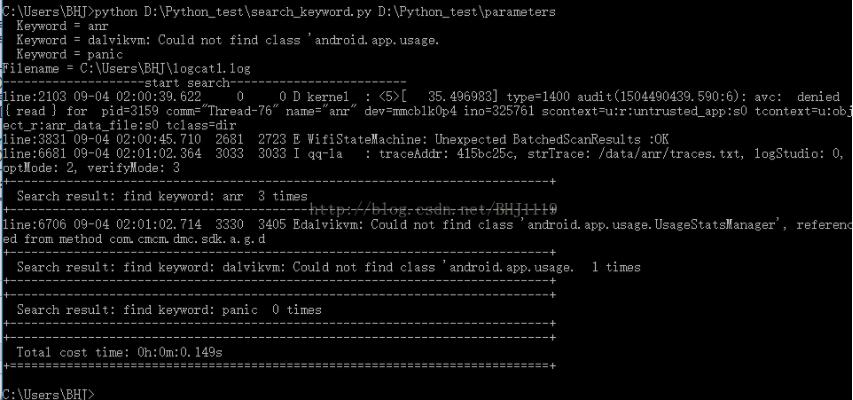Python学习笔记(二)基础语法
学习Python,基本语法不是特别难,有了C的基本知识,理解比较容易。本文的主要内容是Python基础语法,学完后,能熟练使用就好。(开发环境依然是Python2.7,简单使用)
一,基本知识
1,不需要预先定义数据类型(此说法值得商榷,姑且这么说吧),这是与其他语言的最大不同(如C,C++,C#,Delphi等)
>>> x=12
>>> y=13
>>> z=x+y
>>> print z
25
注意:尽管变量不需要预先定义,但是要使用的时候,必须赋值,否则报错:
>>> le
Traceback (most recent call last):
File "<pyshell#8>", line 1, in <module>
le
NameError: name 'le' is not defined
2,查看变量的类型函数type():
1 >>> type(x)
2 <type 'int'>
3,查看变量的内存地址函数id():
>>> x=12
>>> y=13
>>> z=x+y
>>> m=12
>>> print 'id(x)=',id(x)
id(x)= 30687684
>>> print 'id(m)=',id(m)
id(m)= 30687684
>>> print 'id(z)=',id(z)
id(z)= 30687528
>>> x=1.30
>>> print 'id(x)=',id(x)
id(x)= 43407128
从上述结果可以发现:变量的指向变,地址不变,换句话说,整数12的地址值始终不变,变化的是变量的指向(如x的地址变化);
4,输出函数print():
>>> x='day'
>>> y=13.4
>>> print x,type(x)
day <type 'str'>
>>> print y,type(y)
13.4 <type 'float'>
逗号运算符(,):可以实现连接字符串和数字型数据。
>>> print 'x=',12
x= 12
格式化控制符:%f浮点数;%s字符串;%d双精度浮点数(这和C的输出是一致的)。
>>> x=12
>>> y=13.0004
>>> z='Python'
>>> print "output %d %f %s"%(x,y,s)
output 12 13.000400 Python
5,输入函数raw_input():
>>> raw_input("input an int:")
input an int:12
'12'
注意:raw_input()输入的均是字符型。
6,查看帮助函数help():
>>> help(id)
Help on built-in function id in module __builtin__:
id(...)
id(object) -> integer
Return the identity of an object. This is guaranteed to be unique among
simultaneously existing objects. (Hint: it's the object's memory address.)
注意:Python的注释,#:仅支持单行注释;另外,Python编程具有严格的缩进格式。
二、函数
1,函数定义及其调用:
#define function:add (函数说明)
def add(x,y): #函数头部,注意冒号,形参x,y
z=x+y #函数体
return z #返回值
#define main function
def main():
a=12
b=13
c=add(a,b) #函数调用,实参a,b
print c
main() #无参函数调用
print 'End1!'
注意:这部分与C的存在的异同在于:
1,形参与实参的用法,无参函数,有参函数,默认参数等规则一致。
如def add(x,y=2),调用可以是add(3)也可以是add(3,4),add(y=34,x)
2,C的形参需要指定数据类型,而Python不需要。
3,Python的返回值允许有多个。如:
def test(n1,n2):
print n1,
print n2
n=n1+n2
m=n1*n2
p=n1-n2
e=n1**n2
return n,m,p,e
print 'Entry programme1'
sum,multi,plus,powl=test(2,10) #这个是C语言所没有的赋值方式
print 'sum=',sum
print 'multi=',multi
print 'plus=',plus
print 'powl=',powl
re=test(2,10)
print re #数据类型为:'tuple'
print re[0],re[1],re[2],re[3]
print 'End1!\n'
运行结果:
Entry programme
2 10
sum= 12
multi= 20
plus= -8
powl= 1024
2 10
(12, 20, -8, 1024)
12 20 -8 1024
End!
2,局部变量:
def f1():
x=12 #局部变量
print x
def f2():
y=13 #局部变量
print y
def f3():
print x #错误:没有定义变量x,这与“不需要预先定义数据类型”不矛盾
print y
def main():
f1()
f2()
#f3()#变量报错
main()
print 'End2!'
3,修改全局变量的值:
def modifyGlobal():
global x #全局变量定义
print 'write x =-1'
x=-1
def main():
# printLocalx()
# printLocaly()
# readGlobal()
modifyGlobal()
x=200
#y=100
print 'before modified global x=',
print x
main()
print 'after modified global x=',
print x
运行结果:
>>>
before modified global x= 200
write x =-1
after modified global x= -1
三、表达式与分支语句
1,表达式:
是由数字,运算符,数字分组符号括号,自由变量和约束变量等以能求得数值的有意义排列方法所得的组合。表示通常有操作数和操作符两部分组成。
分类:算术表达式;关系表达式,逻辑表达式(and/or/not)
2,if分支语句:
1)形式一:(if <condition>:)
>>> sex="male"
>>> if sex=='male':
print 'Man!'
#此处有两次回车键
Man!
>>>
2)形式二:(if <condition>: else (if <condition>:))
sex=raw_input('Please input your sex:')
if sex=='m' or sex=='male':
print 'Man!'
else:
print 'Woman!'
运行结果:
>>>
Please input your sex:male
Man!
3)形式三:(if <condition>: elif <condition>: else ))(这是Python有而C没有的形式)
count=int(raw_input('Please input your score:'))
if count>=90:
print'优秀!'
elif count>=80:
print '优良!'
elif count>=70:
print '合格!'
elif count>=60:
print '及格!'
else:
print '不及格!'
运行结果:
>>>
Please input your score:90
优秀!
注意:Python没有switch语句。
四、循环语句:
背景:在程序设计的时候,经常会遇到一些语句被不断的重复执行,这样的代码极长又低效,很不直观,那么应该考虑用循环体来实现。
1,while语句:与C在表达上有区别,c有while与do……while形式;Python下:while与while……else……形式
1)while形式下:
i=1
while i<5:
print 'Welcome you!'
i=i+1
2)while……else……形式下:
i=1
while i<5:
print 'Welcome you!'
i=i+1
else:
print "While over!" #循环正常结束
注意:如果while非正常状态结束(即不按循环条件结束),则else语句不执行。如下:
i=1
while i<5:
print 'Welcome you!'
i=i+1
if i==2:
print 'While……'
break
else:
print "While over!"
运行结果:
1 >>>
2 Welcome you!
3 While……
补充:
continue语句:在while循环体中出现时,本次循环continue之下的语句不被执行,直接进入下一次循环。
i=1
while i<=5:
if i==2 or i==4:
print 'While……continue'
i=i+1
continue
print 'Welcome you!'
i=i+1
else:
print "While over!"
运行结果:
>>>
Welcome you!
While……continue
Welcome you!
While……continue
Welcome you!
While over!
五,小结:
本文介绍了Python的变量,输入输出函数,表达式,基本语句(分支和循环)等知识的相关使用,通过练习,应该对Python有一个初步的认识。

